NIL
Steve Sarkisian highlights what sets Texas apart in NIL recruiting battles
Texas Longhorns’ head coach Steve Sarkisian adamantly believes his program has the best product in the country. The Longhorns have certainly reached new heights under Sarkisian since he took the job in 2021. After a losing season in his first year, Texas has posted a 33-10 record with a Big 12 championship in 2023 and […]
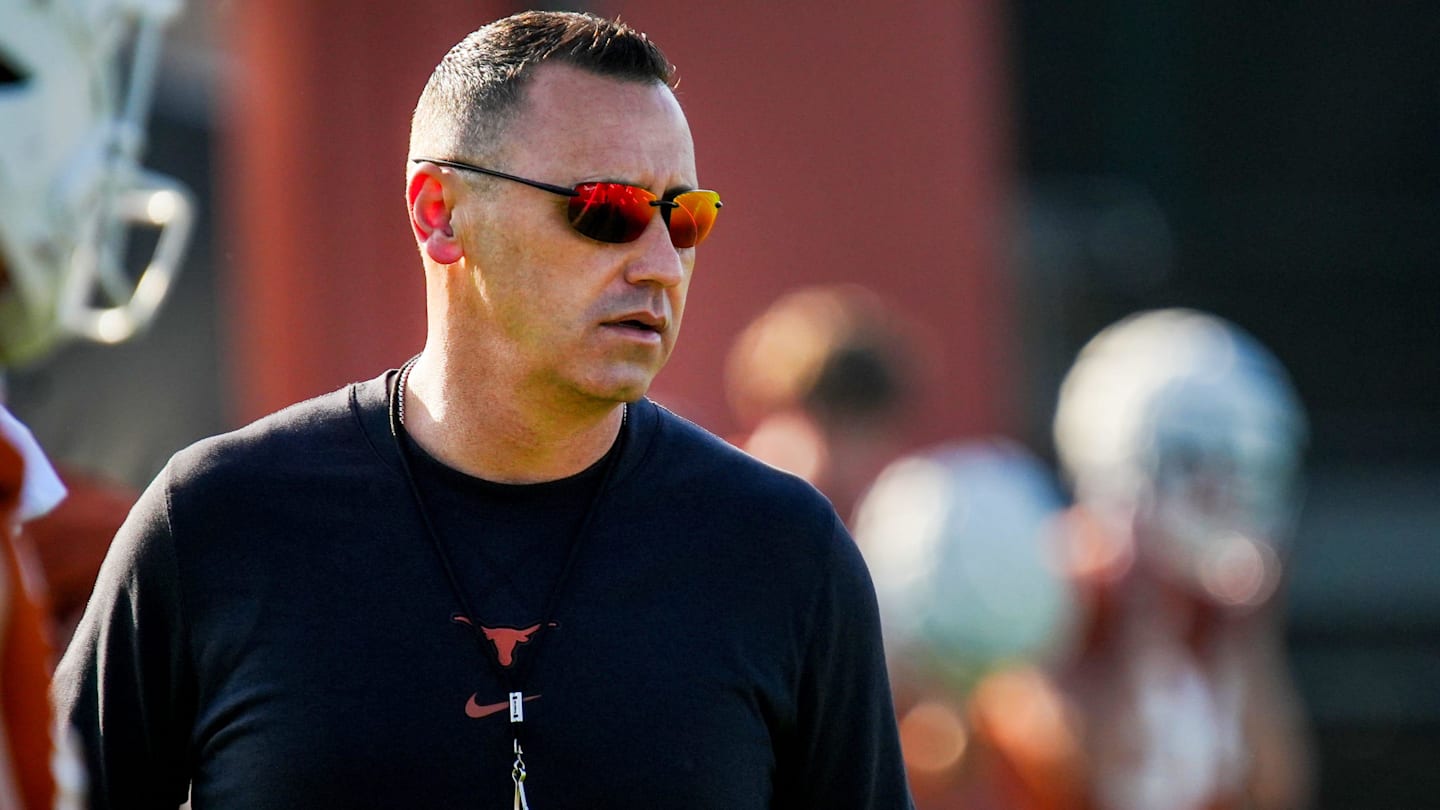
Texas Longhorns’ head coach Steve Sarkisian adamantly believes his program has the best product in the country.
The Longhorns have certainly reached new heights under Sarkisian since he took the job in 2021. After a losing season in his first year, Texas has posted a 33-10 record with a Big 12 championship in 2023 and back-to-back College Football Playoff appearances over the last two seasons.
Things have also improved significantly on the recruiting trail, as Texas is coming off the nation’s top class of the 2025 cycle after signing the No. 6 class and No. 3 class, respectively, over the previous two cycles.
Additionally, the Longhorns have produced the most NFL Draft picks (23) by any program over the last two years.
Sarkisian noted those accomplishments, along with making the 2024 SEC title game in the first season in the conference, when explaining why Texas is such an enticing spot for some of the top players in the country.
“All the while that’s occurring at a top five public institution in the United States,” Sarkisian said Tuesday on “3rd & Longhorn.” “All the while being part of an athletic department that’s won four of the five last athletic director’s cups.”
Longhorns football is backed by a large NIL war chest that is estimated to spend $22.2 million this year, the most in the country, per NCAA estimates. And Sarkisian believes there are additional opportunties for his players given Austin’s lack of professional sports teams.
“But all the while you’re doing it in the city of Austin, which, oh, by the way, is the largest city in the US with no pro sports,” Sarkisian said. “So, no NFL, no major league baseball, no NBA. So, who are getting those NIL deals?”
Sarkisian and Co. appear to be using that aspect to sign recruits and transfers to lesser deals than they might get elsewhere, something he believes has to happen to maintain depth and stay near the top of college football.
“Maybe we get a guy for a little bit less than another school’s offering,” he said. “Especially in this day and age, that’s got to happen … I (a recruit) want to look at more of the long-term money and Texas is going to provide me an opportunity to to create more opportunities whether it’s on the field, off the field, degree, NIL, brand building, player development, opportunity in the NFL.”
“We’ve got a lot of avenues to go come here and be really successful,” Sarkisian continued. So, there’s a lot to it. But like I said, I think we have the best product in the US. I don’t think there’s another school that can say that.”
NIL
The Big West continues to cultivate strong coaches
For those on the East Coast, West Coast games can make for late nights. What we miss is some excellent basketball, headed by some excellent coaches. The Big West conference has been one of the better mid-major conferences in college basketball for a while. Just last season, five Big West teams notched more than 20 […]

For those on the East Coast, West Coast games can make for late nights. What we miss is some excellent basketball, headed by some excellent coaches. The Big West conference has been one of the better mid-major conferences in college basketball for a while. Just last season, five Big West teams notched more than 20 wins, and the top two teams, UC San Diego and UC Irvine, went a combined 62-12 and 35-5 in conference play.
The Big West has been cultivating solid head coaches for a long time, and the conference has recently grown stronger due to the high quality of its head coaches. Two of those coaches, Mike Magpayo from UC Riverside and Eric Olen of UC San Diego, moved on to jobs at Fordham and New Mexico, respectively. The rest of the conference is littered with coaches who have had and continue to have success.
UC Irvine- Russell Turner
Let’s start with the most tenured coach in the conference and arguably the most successful, UC-Irvine’s Russell Turner. Turner will be entering his 16th season as the head coach of the Anteaters after his most successful season in terms of wins, going 32-7 in 2024-25. In addition, for the second straight season, UC Irvine finished 17-3 in league play and made a run to the NIT finals.
During his tenure, Turner has amassed 321 wins and, over that time, has had plenty of opportunities to move to another job but has stayed with the Anteaters. He’s eclipsed the 20-win mark 10 times and finished in the top two in the Big West 10 times. If you remove his first two seasons, which are also the only time his team finished below .500, his record is 288-148 with seven trips to either the NCAA Tournament or the NIT in 13 seasons. Turner and UC Irvine have become the gold standard for success in the Big West.
UC Santa Barbara-Joe Pasternack
Another Big West coach who has been extremely successful is Joe Pasternack at UC Santa Barbara. He spent four years as the head man at New Orleans before joining the Arizona staff in 2011. He remained in Tucson until 2017, when he took the job at UCSB. It wasn’t an easy job to take over as he was replacing the legendary Bob Williams, who is the school’s winningest coach with 313 wins.
Pasternack has certainly been up to the task of replacing a legend. Through eight years of his tenure, Pasternack has become the 3rd winningest coach in school history with a record of 169-81. He has won the Big West regular season and tournament championships twice, in both 2021 and 2023. Their trip to the NCAA Tournament in 2021 earned Pasternack Coach of the Year honors. The Gauchos have had a top-two conference finish five times in their eight years, a feat that Williams accomplished nine times in 19 seasons. UCSB has finished with at least 21 wins in all but two of Pasternack’s eight seasons, a mark Williams hit just twice in his career.
UC Riverside-Mike Magpayo and Gus Argenal
UC Riverside had to make a coaching change this summer because the most successful coach in the school’s Division I history, Mike Magpayo, moved on to take the head coaching job at Fordham. Magpayo spent five seasons with the Highlanders, compiling an 89-63 record. Magpayo notched a bunch of firsts for the Highlanders’ program at the Division I level. Their first 20-win season came in 2022-23, followed by another one this past season. They’ve also had their highest Big West Conference finish with three 3rd-place finishes in his five seasons. Magpayo went out with a bang, bringing the school its first trip to the NIT last year.
Hoping to repeat Magpayo’s success, UC Riverside dipped into the Division II ranks to find his replacement. They settled on Cal State San Bernardino head coach Gus Argenal for his first Division I head coaching job. Having played at UC Davis and coached there and at Cal State Fullerton, he’s quite familiar with the Big West. After two seasons on the staff at Arkansas, he took the job at Cal State San Bernardino. In two seasons with the Coyotes, he went 50-20 with two trips to the NCAA Tournament, including the Final Four in 2023-24.
UC San Diego-Eric Olen and Clint Allard
Another team in the Big West that had to make a coaching change thanks to the success their former coach had is UC San Diego. In their first season of postseason eligibility, the Tritons and head coach Eric Olen grabbed the bull by the horns by going 30-5 and earning a trip to the NCAA Tournament. Olen spent a total of 12 seasons with the Tritons, with the last five at the Division I level. In the previous five seasons at the Division II level, all Olen did was go 128-34 with 4 trips to the Big Dance. When the 2020 tournament was canceled, UC San Diego was 30-1 and 21-1 in conference play. Olen buoyed all of that success into the head coaching job at New Mexico after the season ended.
To replace Olen, the Tritons didn’t have to look far, just further down the bench, pegging associate head coach Clint Allard for the top seat. Allard is a Triton lifer, having played there and becoming an assistant with a short three-year stint at Cal Poly Pomona in between. Whether Allard can continue Olen’s success remains to be seen, but he’s had a bird’s eye view of what the recipe for success at UC San Diego looks like.
Hawaii-Eran Ganot
Eran Ganot is entering his 10th season at the helm of the Hawaii Rainbow Warriors. He’s already the school’s 2nd-winningest coach with a 171-118 record. Not only did Ganot reach the NCAA Tournament in his first year, he led the Rainbow Warriors to one of the biggest first-round upsets in the 2016 tournament, knocking off No. 4 seed California. Even though it has yet to reach the postseason since his inaugural season, Hawaii has been consistent, finishing in the top five of the Big West in six of his last nine seasons.
Over the last three seasons, Hawaii has seen the most success the team has seen since Ganot’s first year. In that span, Hawaii has a 57-41 record, including back-to-back 20-win seasons from 2022-2024, they hadn’t reached that benchmark since his first season. This season will be Hawaii’s final in the Big West as they are slated to move to the Mountain West in 2026. Expect their swan song to be another consistently strong finish.
Cal State Northridge-Andy Newman
For the second time in this piece, Cal State San Bernardino has lost a coach to the Big West. Before the 2023-24 season, Cal State Northridge grabbed CSU San Bernardino coach Andy Newman to be their new head coach. After five successful seasons with the Coyotes, Newman received another chance to be a head man at the Division I level. He was the interim head coach at Cal State Fullerton back in 2012 when the Titans went 14-18.
Very quickly, Newman has proven he was more prepared this time around. In his first year in 2023, he led the Matadors to a 19-15 record. That may not make people stand up and take notice, but when it’s the most wins by the school since 2007-08 when they went 20-10, it shines a whole new light on Newman’s first year. As an encore last season, the Matadors’ 22-11 and 14-6 Big West records were the most wins since the turn of the century when they went 22-10 and the 14 conference wins was a mark not seen in the school’s history at the Division I level, a mark that propelled them to the NIT. With Newman at the helm, things are certainly pointing north in Northridge.
Cal Poly-Mike DeGeorge
From the early 1970s through the mid-1980s, the Cal Poly Mustangs were one of the most successful teams at the Division II level. Under the direction of Ernie Wheeler, the Mustangs won 254 games from 1972-1986 with six trips to the NCAA Tournament.
Since then, consistent success has been difficult to attain for the Mustangs. They haven’t won 20 games in a single season since Wheeler’s last year in 1986, and a Cinderella run in the 2014 Big West tournament with a 14-20 record led to their only NCAA Tournament appearance as a Division I school. Enter Mike DeGeorge last season, to hopefully turn things around. If the Mustangs were looking for a coach who knows how to win, look no further than DeGeorge, who, prior to taking the job at Cal Poly, spent six seasons at Colorado Mesa. In those six seasons, he compiled a record of 141-43 with four straight trips to the NCAA Tournament thanks to four consecutive top-2 finishes in conference with a record of 75-10 against conference foes in those four years.
Even though DeGeorge went just 16-19 with an 8-12 Big West record in his first year, the school has to be thrilled because both of those win totals were the best since Joe Callero led the team to a CIT appearance in 2012-13.
NIL
Nick Saban’s enduring influence in Alabama football continues as he shapes recruiting strategy from behind the scenes
Nick Saban’s Ongoing Influence on Alabama Football Nick Saban may no longer be the head coach on the sidelines, but his influence on Alabama football is as strong as ever. The legendary figure continues to play a pivotal role behind the scenes, shaping the future of the program and its recruiting strategies. A Transition Under […]
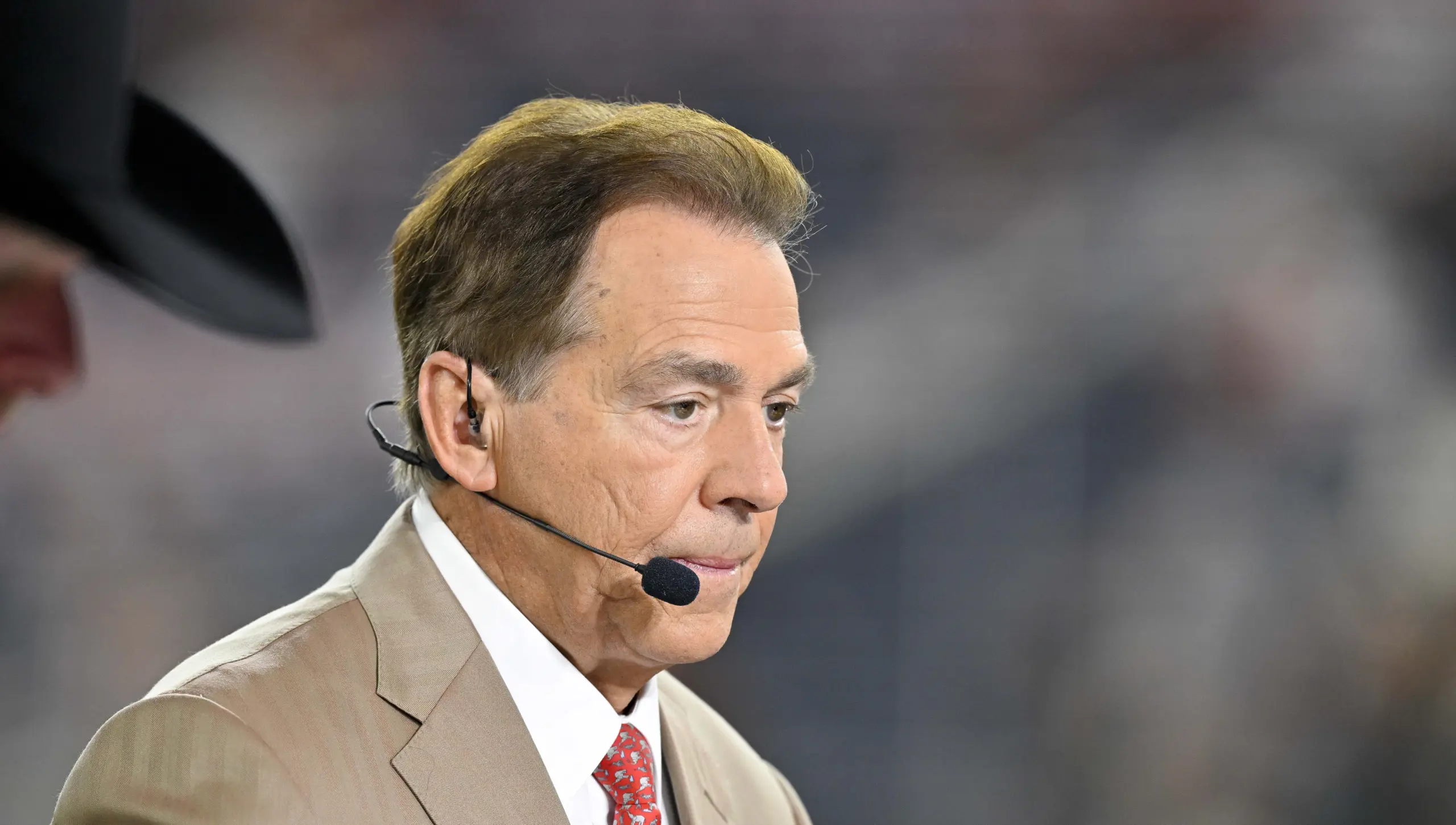
Nick Saban’s Ongoing Influence on Alabama Football
Nick Saban may no longer be the head coach on the sidelines, but his influence on Alabama football is as strong as ever. The legendary figure continues to play a pivotal role behind the scenes, shaping the future of the program and its recruiting strategies.
A Transition Under Saban’s Watchful Eye
As Kalen DeBoer steps into the head coaching role, Saban’s seasoned guidance is evident. It’s akin to a skilled pilot who has handed over the controls but remains in the cockpit, ready to offer direction. Saban’s experience and insights are invaluable during this transitional phase, ensuring that the program maintains its competitive edge.
Active Recruitment Efforts
Saban’s involvement extends beyond mere oversight; he is actively engaged in recruiting top-tier talent for the Crimson Tide. His ability to attract high-caliber players is a testament to his enduring legacy and the respect he commands in college football. This behind-the-scenes role allows Saban to continue shaping the team’s future while empowering DeBoer to establish his own identity as head coach.
The Legacy of a Coaching Icon
While Saban has stepped back from the day-to-day responsibilities of coaching, his commitment to Alabama football remains unwavering. The program continues to benefit from his strategic vision and unparalleled knowledge of the game. As he navigates this new chapter, Saban’s influence is a constant reminder of his lasting impact on the sport and the university.
In a landscape where coaching changes can lead to uncertainty, Saban’s presence provides a stabilizing force for Alabama football. His dedication to the program and its players ensures that the Crimson Tide will remain a formidable force in college football for years to come.
NIL
College sports has a soft salary cap now. How does it work? – Macomb Daily
College sports has another before and after date. Before July 1, 2025 – this Tuesday – athletes could make money off their name, image and likeness (NIL) but not be paid directly by their schools. And after July 1, that has changed, making college sports look and feel even more like the pros. Some of […]
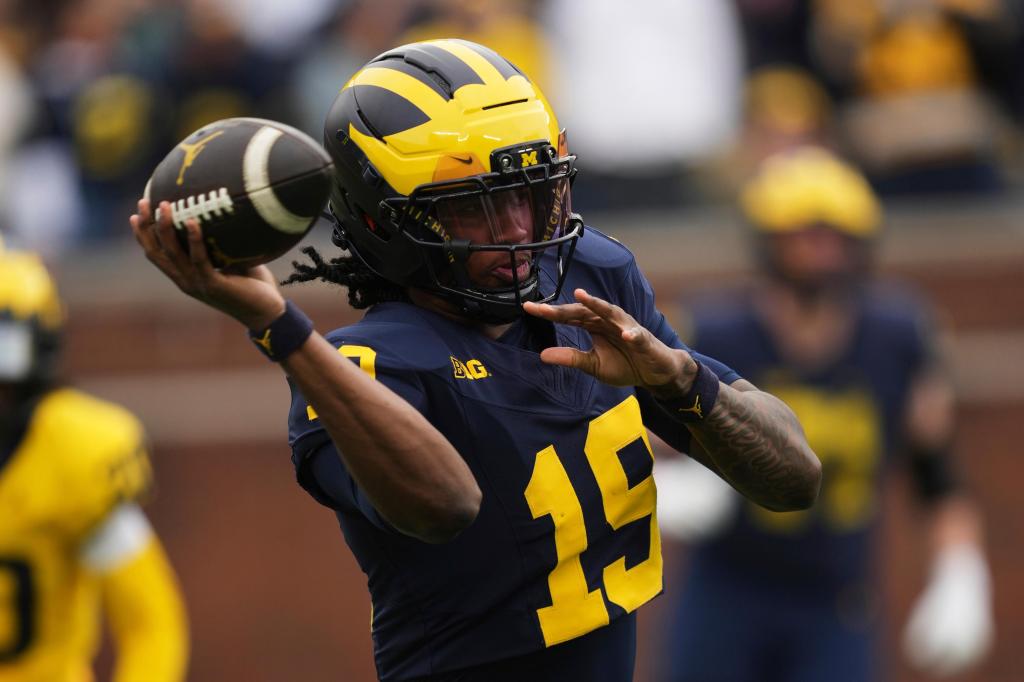
College sports has another before and after date.
Before July 1, 2025 – this Tuesday – athletes could make money off their name, image and likeness (NIL) but not be paid directly by their schools. And after July 1, that has changed, making college sports look and feel even more like the pros.
NIL
60396 Spectators at Historic Football Clash for Arch Rivals Nanjing vs Suzhou
The record-breaking crowd for the amateur Jiangsu City League match had snatched up their tickets in just 10 seconds. Their enthusiasm not dampened by the evening of 5 July’s 40-degree heat, fans had to console themselves with a nil-nil draw. Full story (in Chinese) via this link; read about Nanjing introduced as never before via this link. […]

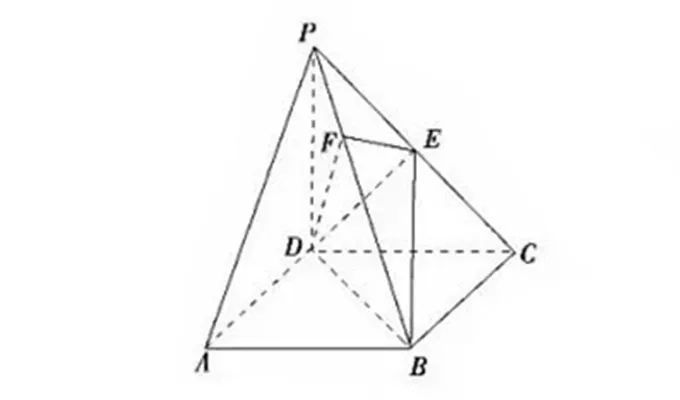

The record-breaking crowd for the amateur Jiangsu City League match had snatched up their tickets in just 10 seconds. Their enthusiasm not dampened by the evening of 5 July’s 40-degree heat, fans had to console themselves with a nil-nil draw. Full story (in Chinese) via this link; read about Nanjing introduced as never before via this link.
NIL
Explosive recruiting news highlights nation’s birthday
Fourth of July fireworks in the college football recruiting chase Five-star offensive tackle Felix Ojo committed to Texas Tech Friday, 6-6, 275 from Mansfield, Texas. ESPN reported that Ojo signed a fully-guaranteed three-year contract with the Red Raiders worth $5.1 million. He chose the Lubbock, Texas school over Florida, Michigan, Ohio State and Texas after […]
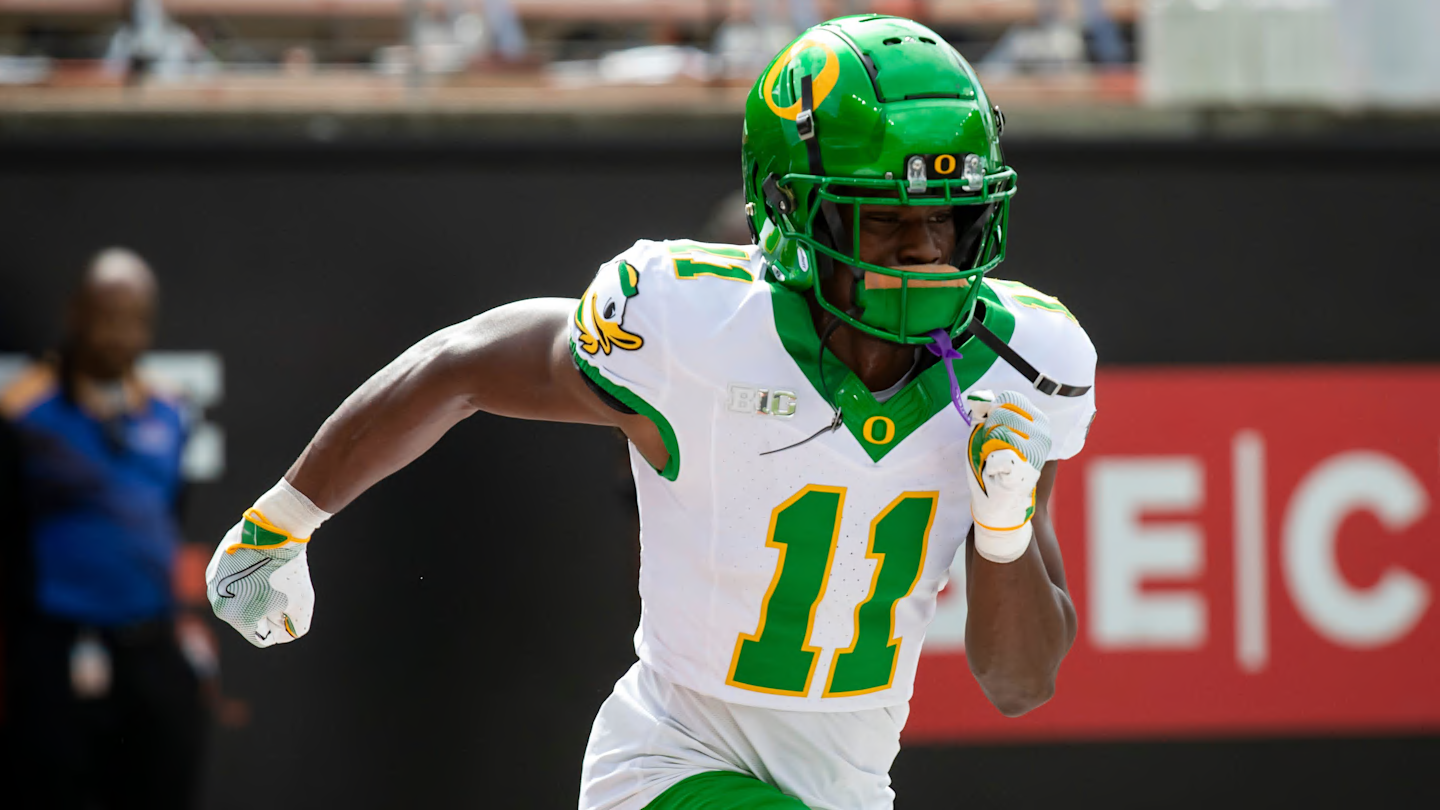
Fourth of July fireworks in the college football recruiting chase
Five-star offensive tackle Felix Ojo committed to Texas Tech Friday, 6-6, 275 from Mansfield, Texas.
ESPN reported that Ojo signed a fully-guaranteed three-year contract with the Red Raiders worth $5.1 million. He chose the Lubbock, Texas school over Florida, Michigan, Ohio State and Texas after making official visits to all five.
In the most recent rankings from 247 Sports, Ojo is the No. 5 overall prospect and No. 1 offensive tackle, the highest-rated recruit in TTU history.
5-Star and Top 10 recruit Felix Ojo is headed to Texas Tech on a 3-year, $5.1 million deal according to his agent Derrick Shelby
You’re looking at the future of college sports pic.twitter.com/1Lql9ZK8SN
— Unnecessary Roughness (@UnnecRoughness) July 4, 2025
His commitment underscores again how volatile the market for freshman college football players has become. Ojo is 17, with one more season to play at Lake Ridge High in Mansfield.
His agent Derrick Shelby of Prestige Management told ESPN, “Football is a brutal sport, and athletes are not able to play professionally until their graduating class has been in college three years. It was important to be able to secure Felix Ojo’s future and give him and his family some security as he continues to develop into a first-round NFL draft pick.”
This one signing elevated Tech’s 2026 class from No. 36 to No. 23 in the national team rankings. They’ve finished in the national Top 25 just twice, in 2011 and 2025.
For the Ducks it’s an advantage to have a talented player go to the Big 12 rather than adding to the imposing stable at playoff contenders like Ohio State, Michigan or Texas, yet it’s sobering to see what unproven players are getting after the House Settlement and NIL.
The Ducks landed their own five-star tackle Wednesday, Immanuel Iheanacho of Georgetown Prep in North Bethesda, Maryland, ranked No. 8 overall as an interior lineman by 247, No. 4 as an offensive tackle by On3.
The star ratings expire on the first day of practice, and they don’t always agree with one another on basic facts, though they’ve shown to correlate strongly with team success and NFL futures.
Last year’s national champion Ohio State built their team with recruiting classes ranked 3, 4, 4, 4, and 2. Other recent national champions have all been strong recruiters, though the Michigan national championship team benefited from the Covid extra year and a strong core of players who passed up the draft and stayed in the program for an additional season.
Georgia’s national championship squads in 2021 and 2022 featured a couple of No. 1 recruiting classes. Kirby Smart sent eight players to the first round in those two seasons. The Bulldogs had a record 15 drafted in 2022. Talent wins, but it’s getting more expensive.
Blue-chip wide receiver commits go to USC and (?) Sacramento State
USC won a commitment yesterday from Boobie Feaster, a four-star wide receiver from DeSoto, Texas. The Trojans got him over Alabama, LSU and Texas A&M, their 31st commitment in the 2026 class.
The Ducks will try to keep pace in the coming days as 6-5 Miami wide receiver Calvin Russell announces today, four-star Texas wideout Jalen Lott on Tuesday. Oregon is in the final group for each, trending to land Lott. Both visited Eugene in June.
5
WR Calvin Russell will announce his commitment at 9 p.m. ET Saturday, per his Instagram.
– Michigan
– Syracuse
-Oregon
– Florida Stateare all in contention. pic.twitter.com/jdAqgZMJia
— Ethan McDowell (@ethanmmcdowell) July 2, 2025
Odd news came out of Sacramento yesterday. The Hornets and new coach Brennan Marion got a commitment from four-star wide receiver Xavier McDonald of Morton, Mississippi, winning out over Ole Miss, LSU and North Carolina.
Sacramento State lands WR Xavier McDonald who picked the Hornets over multiple SEC schools.
Sac State now has the 55th ranked 2026 recruiting class in the nation. There are 136 FBS teams. Sac St is recruiting better than 55%+ of the FBS.
Brennan Marion & his staff are cooking pic.twitter.com/hQ2iq36JNs
— Garrett Armbrust (@4thandsaturday) July 4, 2025
They also won a recruiting battle for Paducah, Kentucky athlete Chance McPike, another 2026 four-star, the two highest-rated recruits in program history. Sacramento State competes in the FCS Big Sky Conference. They were recently denied in a bid to move to the FBS but continue to pursue it.
The trend in college football continues to be more parity combined with higher prices, a monumental challenge to the foundations of the sport. It needs a labor agreement, leadership, vision, structure and sanity.
A program like Oregon with a sound, cohesive plan and expert talent evaluation is best suited to thrive in the chaos.
Read More:
NIL
How the NCAA v. House settlement impacts UConn in 2025-26
When U.S. District Judge Claudia Wilken approved the multibillion-dollar House v. NCAA settlement on June 6, the world of college athletics changed forever. The settlement resolved three separate federal antitrust lawsuits filed against the NCAA, all of which claimed the organization had illegally restricted the earning power of college athletes for decades. It took nearly […]

When U.S. District Judge Claudia Wilken approved the multibillion-dollar House v. NCAA settlement on June 6, the world of college athletics changed forever.
The settlement resolved three separate federal antitrust lawsuits filed against the NCAA, all of which claimed the organization had illegally restricted the earning power of college athletes for decades. It took nearly a year of discussions and modifications for the settlement to be approved, opening the door for every Division I institution in the country to begin paying athletes directly for their name, image and likeness. When the NCAA first changed its rules to allow NIL monetization in July 2021, it was strictly limited to third-party deals.
The settlement includes $2.8 billion in back payments for athletes who competed in Division I from 2016-24, and it sets a cap of $20.5 million on revenue sharing for each institution in 2025-26. The cap will increase by a minimum of 4 percent every year over the 10-year agreement. The settlement also does away with the NCAA’s long-standing scholarship limits, replacing them with roster limits for each sport — though schools may exceed those limits to keep current players on the roster until their eligibility runs out. However, athletes still will not be classified as employees of their universities under the settlement; instead they are being paid as 1099 contractors for the use of their NIL.
The Connecticut state legislature paved the way for UConn to opt into the settlement in February, passing a bill that included language allowing student athletes to earn direct compensation from the institution through revenue sharing.
Female athletes appeal landmark NCAA settlement, saying it violates federal antidiscrimination law
How is UConn distributing funds in 2025-26?
Though the settlement set the revenue-sharing cap of $20.5 million, UConn only plans to distribute $18 million this season with a goal of reaching the cap in the near future. UConn has not disclosed how it will disperse its funds, and the settlement doesn’t include any requirements for how revenue shares should be divided across sports. It does outline a structure that many programs are using as a guideline: 75 percent to football, 15 percent to men’s basketball, 5 percent to women’s basketball, and 5 percent to all remaining sports.
If UConn adheres to that structure, the percentages will translate to roughly $13.5 million distributed to football, $2.7 million to men’s basketball, $900,000 to women’s basketball and $900,000 to the remaining 18 sports sponsored by the university — but every sport does not have to receive a share. At UConn, programs like hockey and baseball will likely be prioritized as the biggest revenue drivers behind basketball and football.
Once revenue shares are allocated, UConn women’s basketball coach Geno Auriemma indicated that it will be up to each team to determine how the funds are distributed across its roster. Players can also continue to receive external payments from third-party NIL deals.
“We’re opting in obviously so that we can compete at that level, but then it’s all about allocating those resources to the teams that you’re going to allocate them to,” Auriemma said. “And then it’s about how on your roster you’re going to manage your number, and every team has a different number. We got home on a Monday from winning the national championship … and Tuesday it’s nine o’clock in the morning and we’re in the office trying to figure all this crap out.”

a run at title No. 13. (AP Photo/Chris O’Meara)
Where is the money coming from?
Many schools are leaning heavily on donor contributions to fund revenue sharing, especially early on. UConn athletic director David Benedict said in a statement after the settlement’s approval that the Huskies need to “double our overall donor participation in terms of Husky Athletic Fund members and contributions, in order to continue competing at the highest level.”
UConn’s external NIL collective, “Bleeding Blue For Good,” announced at the end of 2024 that it would stop accepting donations and cease operations once the settlement was approved in June, steering all donor support for NIL toward the athletic department directly.
Benedict also said in his statement that the athletic department is looking into other methods to increase future revenue during the 2025-26 season. UConn is seeking new corporate sponsorships and media rights opportunities, as well as exploring naming rights initiatives, expanding concession areas at home games, and expanding merchandising and apparel sales.
How are payments regulated?
Amid the NCAA’s ongoing legal troubles, the College Sports Commission was formed to enforce the House settlement and regulate all revenue-sharing agreements. The organization is led by CEO Bryan Seeley, the former executive vice president for legal and operations with Major League Baseball, and its primary goal will be to prevent athletic departments from attempting to circumvent the $20.5 million revenue-sharing cap.
LBi Software, a software company focused on business and sports information management, was tasked with creating the College Athlete Payment System, a digital program that tracks revenue sharing allocations toward the cap, manages roster spots under the settlement’s new limits and monitors payments going out to athletes.
The House settlement also institutes a requirement that athletes report third-party NIL deals worth more than $600 beginning in June through a clearinghouse called NIL Go operated by consulting firm Deloitte. Deloitte will use multiple factors to assess whether deals are within “a reasonable range of compensation,” including but not limited to an athlete’s performance, the reach of their social media audience, their university’s brand value and the requirements of the deal.
How does UConn compare to the Big East and power conferences?
UConn is in a challenging situation compared to other top contenders in the Big East because it is the only member institution that sponsors FBS football. Butler, Georgetown and Villanova field football teams at the FCS level, but Villanova athletic director Eric Roedl and Butler athletic director Grant Leiendecker have said explicitly that their revenue-sharing efforts will prioritize basketball.
The Huskies have spent the last several years attempting to break into a power conference, and that will require a massive continued investment in football. The university had a lengthy flirtation with the Big 12 last summer that ultimately fell through, and it was also involved in conversations with the new-look Pac-12. Every program in the Power Four (SEC, Big Ten, ACC and Big 12) is expected to share roughly $13-16 million in revenue with their football programs in 2025-26.
Big East schools without football likely won’t be able to raise funds on the same scale as UConn or the power conferences, but they can dedicate a much larger percentage of their revenue shares to basketball. Power Four programs are expected to distribute $2-4 million to men’s basketball, but Yahoo Sports reported in March that the majority of Big East teams are planning to spend at least $5 million this season.
“The big football schools, the football programs are probably going to be getting the exact same amount pretty much throughout the big conferences, but I think basketball is going to vary,” Auriemma said. “In the Big East … I think there’s a real opportunity, because men’s basketball becomes your football. We have an opportunity in our conference to really take advantage of this particular situation.”

Are other Division I schools in CT opting in?
The Ivy League, which does not award athletic scholarships, said back in January that it would not participate in the House settlement, and Navy, Air Force and Army also cannot compensate athletes for their name, image and likeness because of military rules. But outside of those programs, very few schools chose to opt out of the settlement. Yahoo Sports reported that 82 percent of Division I programs opted into the settlement for 2025-26, and many of the schools that did opt out have expressed plans to get on board in 2026-27.
Schools had to inform the NCAA by June 30 whether they would opt in for 2025-26, but none of the Division I programs in Connecticut outside of UConn and Yale have made public statements about their plans. The Mack Report reported in February that the MAAC was expecting about 50 percent of its membership to opt into the settlement, which includes Connecticut schools Fairfield, Quinnipiac and Sacred Heart. Central Connecticut State also has not addressed its plans for the settlement.
There is no minimum amount of revenue that schools are required to distribute, so the amount of money paid out by smaller conference schools who opt in will likely be drastically lower than that of the Power Four or even the Big East. Schools that opt out of the settlement will not be subject to roster limits outlined in the settlement, but they will still have to uphold the NCAA scholarship limits that existed before the settlement was approved.
-

 College Sports1 week ago
College Sports1 week agoWAC to Rebrand to UAC, Add Five New Members in 2026
-
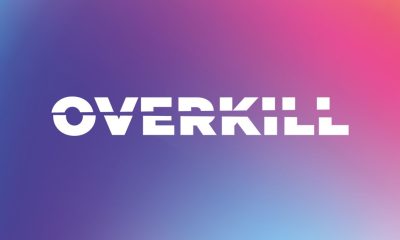
 Technology3 weeks ago
Technology3 weeks agoPolar is teasing a Whoop alternative without subscription
-

 Technology3 weeks ago
Technology3 weeks agoI loved the Whoop MG, but didn’t love the price: that’s why I’m excited about this mysterious new fitness band from a major Garmin rival
-

 Motorsports6 days ago
Motorsports6 days agoWhy Cosmetics are Making Up for Lost Time in Women’s Sports
-

 Professional Sports2 weeks ago
Professional Sports2 weeks agoAlex Pereira responds to rumors of UFC heavyweight title fight with threatening message
-

 College Sports3 weeks ago
College Sports3 weeks agoLocked On Women's Basketball
-
College Sports2 weeks ago
Women's Basketball Thanks Shannon LeBeauf for 14 Seasons
-

 College Sports2 weeks ago
College Sports2 weeks agoAlabama Basketball
-

 Health3 weeks ago
Health3 weeks agoKyrie Irving's Mental Health Message
-

 Technology1 week ago
Technology1 week agoPet fitness and wellness trends for a healthier and happier dog


































